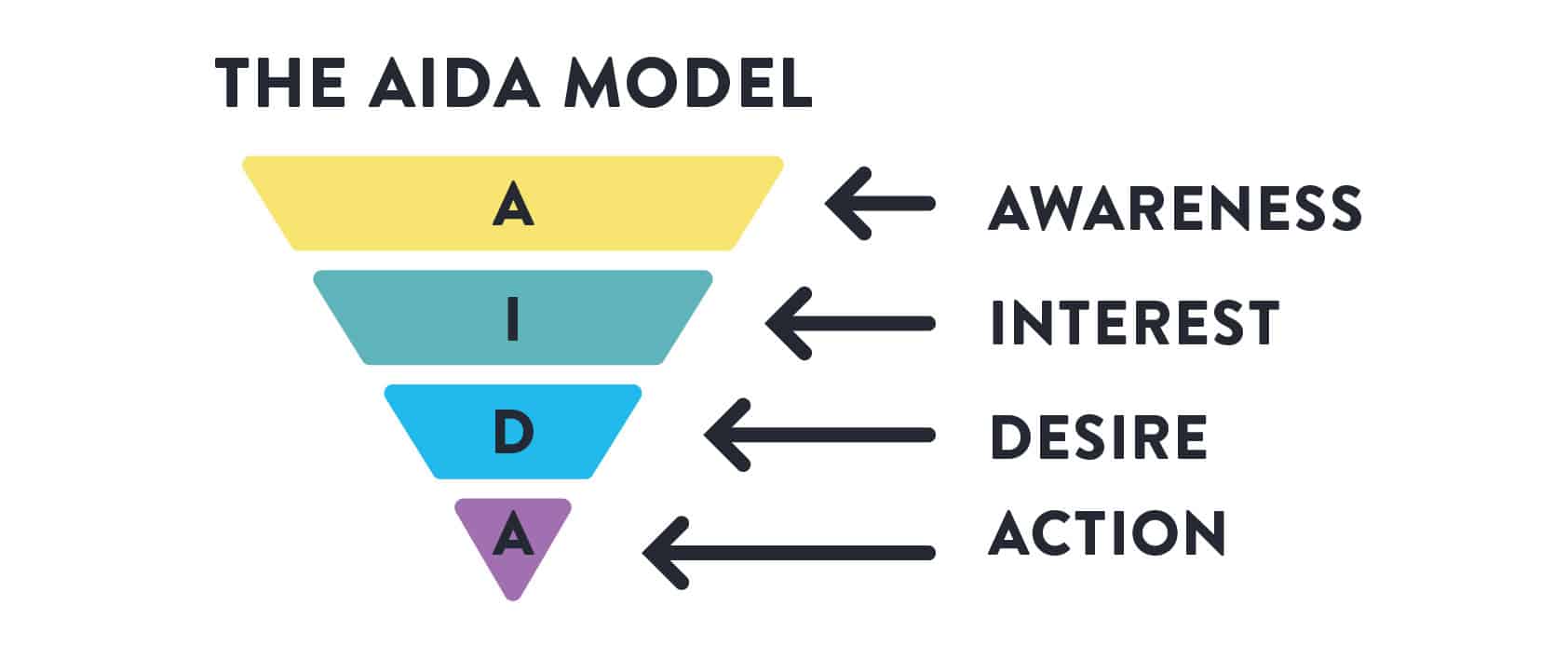
The Beginner’s Guide to Content Websites: Building Content Sites vs. Building Ecommerce Sites
There are many different kinds of online businesses. If you’re a reader of this blog, you likely prefer to build ecommerce websites. And while I think ecommerce is great, today I want to talk to you about a model that I’m personally heavily involved in: Content websites.
Both ecommerce and content websites are highly profitable, scalable, and sustainable but they have many broad differences. They have different monetization intentions, growth strategies, and are entirely different business models.
Most people prefer starting an ecommerce site over a content site because it’s faster to start generating revenue. However, as someone who builds content websites for a living, I’d like to share some reasons why you might want to venture into it yourself.
In this article, I’ll go over some of the differences between ecommerce and content websites, as well as a few reasons why starting a content site could be a better model for some people.
What is a Content Site?

Sometimes referred to as a niche site, authority site or blog, content sites are basically a library of content and information built around a certain topic. And the goal is usually constant: Build as much traffic as you can, then monetize that traffic as effectively as possible.
Some of the biggest content sites on the web today are Forbes, ESPN, Huffington Post, and Inc. Of course, these are giant media companies with hundreds or thousands of employees writing for them. Most content websites you see on the web today are run by just one or two people, and maybe a few freelance writers helping them out.
For example, Succulents and Sunshine is a perfect example of a content website that has built a huge audience (and business) in a tiny niche. The blog is run by a single person, Cassidy Tuttle, who now makes six figures from her blog.
But how did a site like Succulents and Sunshine grow such a large business with only one person running it?
She chose a targeted niche, created evergreen content, and slowly built up a large audience over time. Once she had enough traffic coming in, she monetized it.
That traffic can be monetized in various ways like selling ebooks and courses, offering services, display ads, affiliate marketing, collecting and selling leads, etc. The strategy of building and scaling content sites can differ depending on the strategy you choose.
For example, do you want to put out thought pieces and showcase your personal expertise,
build an audience who trusts you, then sell services, consulting, or training? Or do you just want to pump out content, rank for as many keywords as possible, and monetize with ads and affiliate links?
When growing a niche site, most people don’t understand that it’s not a “quick” way to make money. It requires a lot of time, resources, and creativity. You could spend 4 months working on it every day and never make a dollar. In fact, most people don’t see any profits before the 6-month mark of growing their site. As a result, most people give up before they start seeing money.
It’s important to understand that it’s a long term investment, and if you’re persistent, it will grow and be profitable eventually. The reason why people are willing to put in the work and wait months before seeing a profit is that once it’s built up, it almost acts like a self-sustaining machine.
The Pros & Cons of Building Niche/Authority Content Websites Over Ecommerce Websites
Although ecommerce sites do have many pros—including being able to monetize it from the get-go—there are a few instances where building a content site could be more beneficial compared to building an ecommerce site.
Pros of Building Content Websites
- High Profit Margins: Niche sites have very low overhead cost. Traffic is free, long-term, and many monetization strategies have over 90% profit margins. Ecommerce sites have more expenses. They have to manufacture products or purchase them from suppliers. They also have shipping costs, employees, and will usually need to pay a fee to a fulfillment center.
- It’s Passive: Niche sites are much more passive. Depending on the monetization strategies you use, you can literally not even look at the site for a month and it can still make the same amount of money. If you’re using ads or affiliate marketing, you don’t need to deal with things like customer service, order management, and fulfillment.
- You Have a Portfolio of Sites: Yes, it’s possible to do this with ecommerce sites as well, but it’s much easier to do with content websites. Because they’re passive properties, it’s possible to build, manage, and grow multiple sites at a time. They don’t require your full-time attention to manage. So once it’s up and running, you can start pouring resources into growing another site without worrying about it flopping because you didn’t pay attention to it.
- It’s Versatile: Content websites can be turned into many things. The most valuable asset of a content site is its content that generates organic traffic. It’s the rankings you get on Google, which send you free search traffic and it can be monetized in many different ways. You can even use a content site as a content marketing tool to drive traffic to your ecommerce site (more on this below).
- It’s Sustainable: SEO is the main traffic strategy, and if done correctly, can be a long-term source of free traffic for you. That means that you don’t have to rely on paid ads to drive traffic. Most ecommerce sites rely on paid ads to drive traffic to their site and once the ads get turned off, the traffic gets turned off as well. That’s not the case with SEO. Once you do the work, you’ll get traffic organically long-term. Plus, you are basically establishing yourself as an authority in the niche. You’ll gain an audience of loyal fans who will be a lot more receptive to what you’re selling. This means repeat customers, word of mouth, and good reviews.
Cons of Building Content Websites
- It’s Slow: Content sites usually take longer to make money than ecommerce sites. Because the main traffic strategy is SEO, it can take up to 6 months before driving consistent traffic from Google. You have to write articles, get backlinks, and literally nurture your site until it starts picking up.
SEO & Customer Acquisition Differences
Ecommerce sites aren’t usually content-driven. Their pages mainly consist of product listings and category pages, which aren’t good for getting backlinks from other sites or for ranking for many keywords in Google.
So for most online stores doing SEO, they only target keywords that are at the very bottom of the funnel.

Keywords at the bottom of the funnel would be things like:
- Buy dog food
- Buy healthy dog food
When people are searching for these keywords, they’re already willing to buy.
Ranking for these keywords is extremely valuable. You’re essentially capturing traffic right when they’re at the buying stage. But the problem is, these keywords are also some of the most competitive, and not only that, but there aren’t that many of them.
Content Websites focus more on top of the funnel content
Examples of keywords at the top of the funnel would be things like:
- Why is my dog scratching his neck?
- How to potty train a puppy?
- What color dog is most common?
- Best dog food for German Shepherds
- Puppy collar reviews
As you can tell, most of these keywords have nothing to do with buying dog food. So you might wonder why you would even spend resources on trying to rank for keywords like this.
The answer is: If you can create a valuable resource (with your content site), you’re building brand awareness, trust with readers, and most importantly you’re driving traffic to your site.
While these readers may not be interested in dog food specifically at the moment, they’re reading your articles and they are still targeted potential customers who own a dog or are interested in owning one.
There are tons more keywords you can target at the top of the funnel, which is why there are so many content sites with hundreds of thousands of organic visitors per month. There’s just more to talk about.
Another option for ecommerce owners
If you’re an ecommerce site owner and don’t want to build out a full-blown content site as its own standalone business, there’s another option for you.
Ecommerce sites can build on top of their existing sites and add on a blog, essentially building a content site within their ecommerce site. They can even build a separate content site and instead of monetizing it, send all the traffic to their ecommerce site. They can even purchase content websites that are already getting traffic, remove other forms of monetization and send all the traffic to their ecommerce site.
Acquiring a content site is a whole new ball game for most ecommerce entrepreneurs. it requires you to know SEO in order to filter sites that are actually high-quality and will sustain the traffic that they have at the point of purchase. However, if they do rough calculations on what that traffic can mean for sales on their ecommerce sites, it can be a very profitable strategy to start getting into.
Great examples of companies who use strategies like these are Perfect Keto and Cup & Leaf. Cup & Leaf was created by Nat Eliason and he’s written some case studies on how he grew his ecommerce site purely through a content strategy.
Choosing a Niche for Content Websites
Choosing a niche can be tricky. You want it to be something that will drive traffic, be profitable, and, overall, be something that people are interested in.
But, keep in mind that the more profitable the niche is, the more competitive it will be.
Areas like finance, business, real estate, and stocks are some of the most crowded and competitive. This doesn’t mean that you shouldn’t get into one of these, it just means that it may take a lot more time, resources, and expertise to get the same level of traffic growth as a site in a less competitive niche.
To help you get started, I recommend that you create a list of 10-20 subjects that interest you. These subjects can be anything from kayaking to fashion to cryptocurrencies. Once you have your list, you’ll want to break each category down by doing some research. The things you could look for are competitors, search volume, and keywords to target.
Your first niche should always be something that you have knowledge in, or that you’re interested in gaining knowledge in. If you need some inspiration, check out these successful blogs in various industries.
Driving Traffic & Scaling Growth to Content Sites

For most content sites, SEO is the main traffic strategy.
This involves doing keyword research, writing out content, and building backlinks to your site from other sites to strengthen your domain authority. The most important parts of building successful content sites are creating high-quality content and building strong backlinks.
Once you have a strong link profile and domain authority, your pages will be more likely to start getting indexed straight to the first page of search engines like Google when you hit publish. This is the holy grail for content sites, and it can make scaling content production very, very profitable.
The traffic strategy for ecommerce sites is usually different than content sites. The strategy is more focused on paid ads. To scale, you simply pour more money into the ads every month.
Monetization Strategies for Content Websites
For content sites, you have multiple different options and you have the liberty to test out what is driving the most revenue.
You’re also able to use multiple strategies at the same time. For example, you can place ads all across your site, and have affiliate links in some posts that mention partner products. You can sell a course on another page, and even have another page that allows people to book calls with you for an hourly fee.
Stacking monetization strategies can double, triple, or in some cases, more than 10x your revenue with the same amount of traffic.
Here are some basic ways you can monetize your authority site:
- Display advertising
- Selling digital products like ebooks or online courses
- Selling consulting & services
- Affiliate marketing
- Collecting & selling leads
Of course, as we mentioned earlier, content sites can also choose to sell physical products. In this case, they’ll already have a traffic engine built and they can use the existing traffic and send them over to product pages and convert them into sales.
Which One’s Better? Which One’s Easier to Build?
There’s no straight answer to this.
That answer lies behind what you’re interested in and what your goals are. Some people can’t stand SEO and how long it takes; they prefer to drive traffic quickly and have immediate cash flow coming into their business by building ecommerce sites.
Others prefer the long-term, sustainable growth of content sites. They like the idea of building a resource and helping others through information. They may even love to write.
If you can’t decide and are left with a straight 50/50 decision, consider the upfront costs of each.
Content websites don’t take much to get started. You might only need $50 for domain and hosting if you’re scrappy and do all the work yourself. Any additional costs are optional for outsourcing content and maybe for some help with SEO.
With ecommerce sites, the initial upfront costs can be a little steeper. You need to manufacture or purchase products, have products ready to ship as soon as you launch, in some cases buy a storefront, etc.
You also don’t have a ton of room to expand. Yes, you can own multiple ecommerce sites, maybe find a cheaper supplier and increase your margins, but if you’re selling something like generic animal socks, you can never sell it for higher than your competition, otherwise, you’ll lose customers to the cheaper-priced company who sells the same thing.
In terms of building, they’re both relatively complex to get started. There are a lot of steps to follow to ensure that your site is going to be user-friendly and consist of the right things to draw people in. So neither of them are necessarily “easier,” it just depends on your level of knowledge and what you’re comfortable with.
How to Get Your Content Site Started

The initial parts of building out a content site are similar to building a niche site. Get a domain, host the website, and design it with your branding.
Beyond that is when it starts to get different. Content websites require a content strategy. You need to do keyword research using SEO tools like Ahrefs, KWFinder or SEMrush in order to know what you can and can’t rank for at this particular stage of your site.
Basically, you want to target two types of keywords:
- Long-Tail Keywords that Have Low Competition: These keywords may have lower search volumes and may not drive a lot of traffic to your site, but as a new site, these are usually the only ones you can compete for at this stage.
- Larger, Broader Topic Keywords that Showcase Your Brand’s Expertise: These keywords are high search volume and usually have a lot of competition. Your site probably won’t rank for them any time soon, but your entire content strategy shouldn’t only revolve around long-tail keywords. Remember, your goal is to build a strong library of content.
Once you start building content, you want to start building backlinks. This is where most beginners have trouble. A backlink is when other websites link back to your site. The higher authority that site has, the more powerful the backlink.
The simplest way to build backlinks is through guest posting and email outreach. To learn more about building links properly, you can check out this primer to link building with outreach.
Once you have this flow of creating content and building backlinks set up, all you need to do is scale.
Conclusion
Things grow like compound interest: Over time, your site gets stronger and stronger and the content you have starts to rank higher, driving you more traffic. The content you publish in the future start ranking on the first page even if you don’t build any more links to them and because you’re on the first page for so many keywords, you start to get links organically from blog writers doing research for their own articles.
Start monetizing that traffic, test out different methods, and try stacking different methods together.
And voila!
You’ve got an up-and-running content site ready to grow and earn money.



